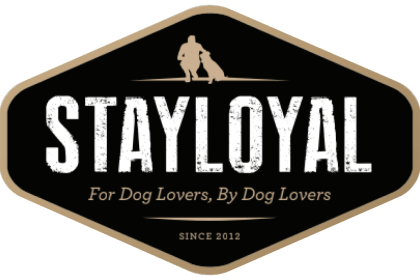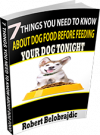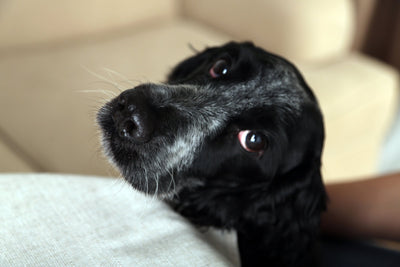Proper Puppy Socializing: The First 18 Months

Getting a puppy is one of the most exciting things. There is nothing like the day you pick out that bundle of fur and bring it home. But that day also marks the beginning of work. Because we all know puppies are work. Not just the feeding, house training, and puppy-proofing the house and yard. One of the most important things is making sure you socialize your puppy properly.
Why is this so important?
A dog’s temperament comes from two places – genetics and experiences, both nature AND nurture. So no matter how even tempered his parents and grandparents were, you still need to make sure he goes out and experiences the world while he is young. BUT! Those experiences need to be POSITIVE in order for your dog to feel comfortable in the world he is expected to live in for the rest of this life.
START IMMEDIATELY
This is the big thing.
A puppy’s main socialization period is from birth to twelve weeks, so it is imperative they get out and experience new people, places, and things.
Many do not worry about exposing their puppy to things before they have had their first shots. And, while it’s true your puppy shouldn’t go to a dog park or visit nose to nose with strange dogs before they are fully vaccinated, there are many things you can do to socialize them that will not expose them to viruses.
You probably noticed that most of a puppy’s main socialization period was spent with its littermates. This is why it’s important to choose a breeder that understands the need to give puppy’s stimulation. Visits with people, objects in their environment to climb over and explore, etc. The better your breeder does at this, the easier job you will have.
But now it’s your turn. Here is s checklist of things you should expose your puppy to from the time you get him to 12 weeks. REMEMBER!! Experiences should be positive! For most puppies, it’s a good idea to keep the exposure short at first. This lessens the chance that something will go wrong (i.e. something scares the puppy) or the puppy gets tired of whatever it is you are exposing him (also a negative). For some things, just a few seconds it all that’s needed. Then, do it again tomorrow.
IF your puppy shows signs of fear or crabbiness (like “I am tired, I don’t want to do this anymore). Do not push them. That will make it worse. Better to try again tomorrow or after your puppy has had a break (nap, playtime, mealtime, etc).
People. Make sure to exposure your puppy to different “types” of people: men, women, children, people wearing hats, sunglasses, in wheelchairs, with canes, etc. Give people toys to interact with your puppy in a positive way. Watch children closely as often their loud voices, sudden and sometimes harsh movements and running can frighten a puppy, especially a small breed.
Surfaces. Ever met a dog that’s scared to walk on smooth surfaces? Make sure your dog isn’t one of them. This can be done in your house! Look for things he can walk on that are made of concrete, carpet, tile, stone, etc. textured paint on wood boards make excellent tactile objects for your puppy to explore. Reward your puppy for going over new surfaces with praise and play.
Sounds. This is a HUGE one. Start getting your puppy used to sounds. Play recordings of fireworks, thunder, trucks, crowds, babies crying. Turn on action movies or the radio too. Do not start the noise loud, start softly and turn up the volume as your dog is comfortable. Again, do something positive while the sound is on, so your dog is classically conditioned to pair the noise with something good, instead of being scared.
Animals. Even though your pup does not have all its shots, it can still look at other animals. Carry him around the park or past your neighbor’s dogs etc. If you have friends or family members with healthy dogs and your vet is fine with it, let them meet those dogs one on one. Neighborhood cats walk by the window? Praise your puppy for being calm and not wanting to bark or chase.
Objects. Things with wheels (bikes, skateboards), vacuum, brooms, etc. Anything your puppy is going to come in contact with should be introduced as soon as possible. Umbrellas are a big one as we often don’t think about them when we get a summer puppy but by winter they are older and may be fearful when we bring it out.
Twelve Weeks to Eighteen Months
Now, your puppy is fully vaccinated and the real work can begin. If you’ve done the above exposures, your puppy is going to be much better prepared for the next phase in his training than a puppy who stayed locked away in a puppy pen for a month.
FEAR PERIODS
The most important thing about this timeframe is that your puppy will go through two fear periods. It is impossible to say when exactly, unfortunately. During these times, all of a sudden your puppy will be scared of things that he used to be fine with. It could be anything from the vacuum to people to dogs. These windows are where the most damage can happen.
One bad experience during a puppy’s fear period can leave a lasting impression for life on your puppy.
It is during these times that often a puppy will become reactive (lunging/barking at people and dogs) or scared of noises, children, bikes, if they have a bad experience. So pay attention to your puppy and when you start noticing they are becoming shy or fearful, take extra care that they have positive only experiences until they become confident again. How bad the “fear period” is varies greatly from dog to dog.
Places. Now that your puppy can walk around without worry of illness, let him walk! Especially little dogs, humans have a habit of carrying them everywhere. This does not allow them to explore their environment. Take them everywhere you can: pet stores, restaurants, store, park, beach, groomers, vet, etc. For the last two, take them when they are not actually going for an appointment. Instead, just go for a visit so they learn to like, not fear, those facilities.
Animals. Now it’s time for your puppy to get some real socializing. Let them greet dogs and other animals IF AND ONLY IF you are positive they will be friendly! This goes for both sides. If you think your puppy is not going to be friendly, but is scared or aggressive, it’s better to forgo this socialization than to have them practice bad behavior. At the same time, you do not want your puppy attacked and frightened by another animal. All it can take is one attack for your puppy to fear other dogs for life. It is best to NOT do this on leash. Dogs tend to feel more threatened on leashes because they cannot get away and they are tethered to a human and unable to present full canine body language.
Training. You can start training your puppy right when you get him at 8 weeks in your home. But now it’s time to take him to training classes. Not only will he get training, but its great socialization – you are in a new place with other dogs, people and noises.
Remember, make sure every experience is a positive one.
It feels like a full time job, but take care to socialize your puppy properly those first two years, and you will both live happier the rest of your life together.








